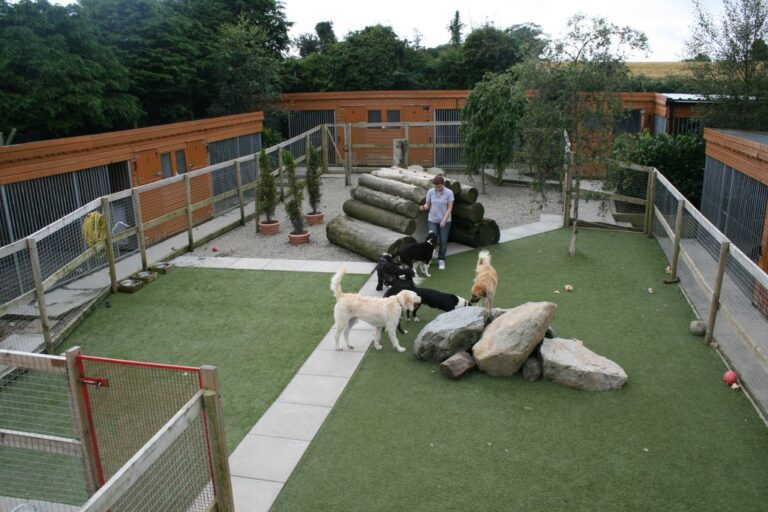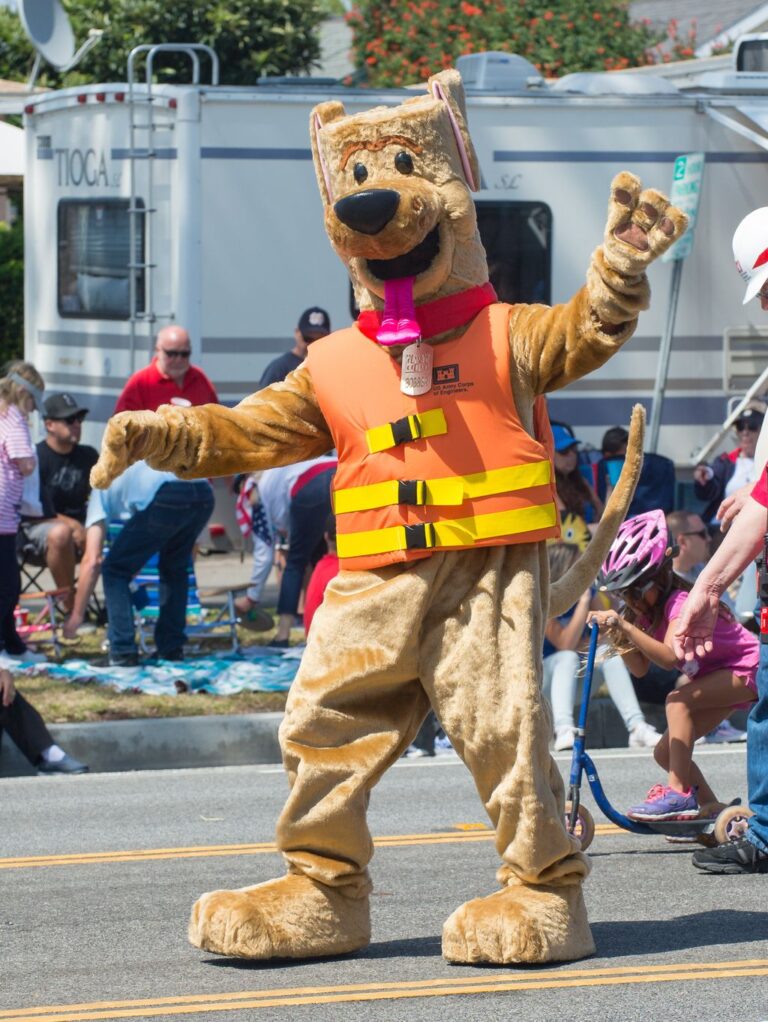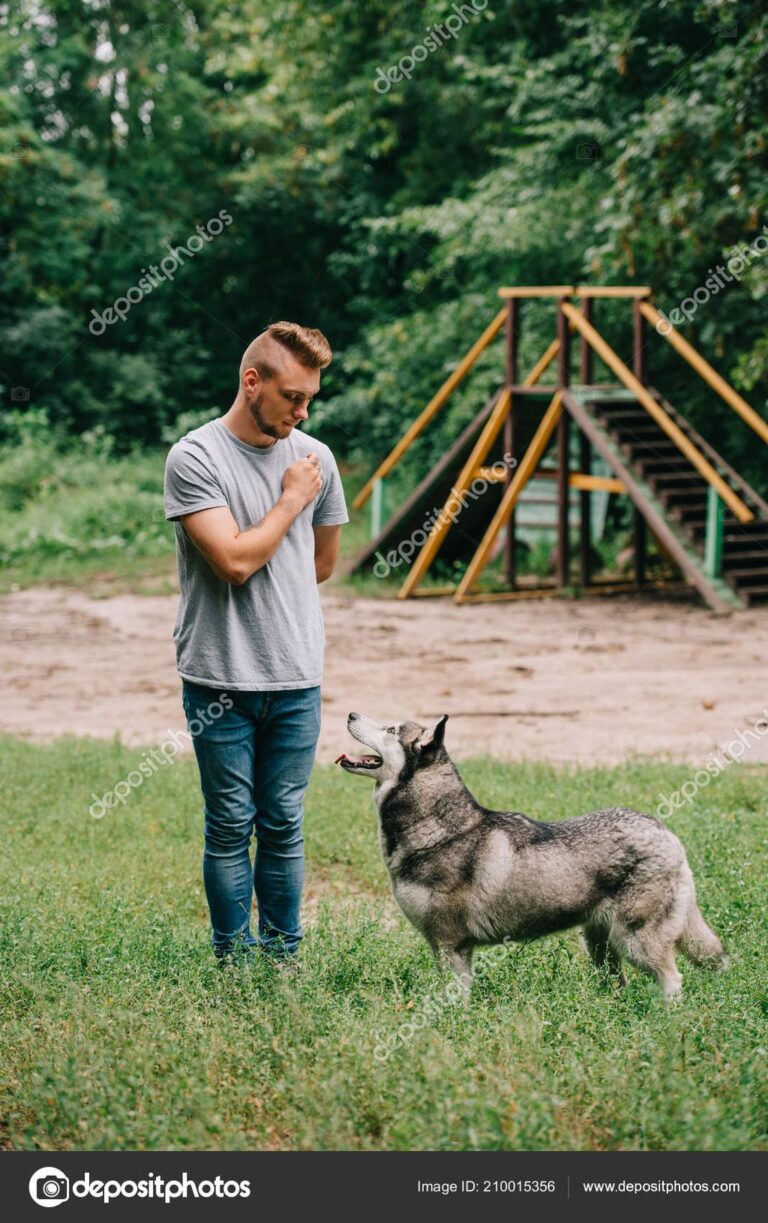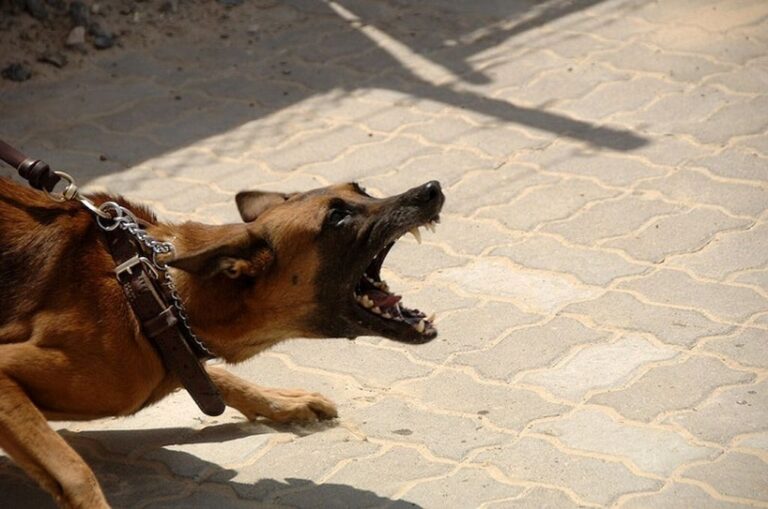Unleash the Potential: Teaching Your Dog Fun and Impressive Tricks
Teaching your dog fun and impressive tricks is a great way to bond with them, provide mental stimulation, and give them physical exercise. By considering your dog’s abilities, tailoring tricks to their personality, and starting with basic tricks, you can choose the right tricks to teach. Using positive reinforcement, breaking down tricks into smaller steps, and being patient and consistent are key to successfully teaching tricks. Some impressive tricks to try include roll over, play dead, and fetching a specific item. Common challenges include lack of motivation, difficulty with a specific trick, and distractions and focus. Remember to have fun and enjoy the process of teaching your dog tricks!
Key Takeaways
- Teaching your dog tricks is a great way to bond with them and provide mental stimulation and physical exercise.
- Consider your dog’s abilities and tailor tricks to their personality when choosing which tricks to teach.
- Use positive reinforcement, break down tricks into smaller steps, and be patient and consistent when teaching tricks.
- Impressive tricks to try include roll over, play dead, and fetching a specific item.
- Common challenges include lack of motivation, difficulty with a specific trick, and distractions and focus.
Why Teach Your Dog Tricks?

Bonding with Your Dog
A strong bond with your dog is essential for effective training. By using positive reinforcement techniques, you can create a positive and trusting relationship with your furry friend. Rewarding your dog for good behavior not only encourages them to repeat those behaviors but also strengthens the bond between you. Remember to be patient and consistent in your training efforts. Dogs thrive on routine and clear expectations, so establishing a consistent training schedule will help them understand what is expected of them.
Here are some tips to help you build a strong bond with your dog:
- Spend quality time together every day, engaging in activities your dog enjoys.
- Use positive reinforcement, such as treats, praise, and play, to reward good behavior.
- Communicate with your dog through body language and verbal cues, using a calm and friendly tone of voice.
Tip: Make training sessions fun and interactive by incorporating games and interactive toys. This will keep your dog engaged and excited to learn.
Remember, building a strong bond with your dog is a lifelong process. The more time and effort you put into it, the stronger your bond will become.
Mental Stimulation
For more mental stimulation, you can try our scent-work class or enrichment seminars. Other next steps could include obedience levels 2-3 or loose leash walking. Unleash the detective in your dog with our Intro to Scent-Work class! Engage in scent games that transform your pup into a prize-seeking superstar. Beyond providing mental and physical stimulation, scent-work is a
Physical Exercise
Physical exercise is essential for keeping our dogs happy and healthy. It helps them burn off energy and stay fit. However, relying solely on physical exercise to tire out high-energy dogs like Border Collies can create a never-ending cycle. The more you exercise them, the fitter they become, and the more exercise they need to get tired. It can be challenging to find enough time in the day to meet their exercise needs. That’s why it’s important to incorporate mental exercise as well.
Mental exercise engages your dog’s mind and provides a different kind of stimulation. It can be just as tiring, if not more, than physical exercise. While activities like scent games, focus games, and teaching tricks can provide some mental exercise, they may not be the most effective strategies. Instead, consider training your dog to stay still. This seemingly simple task requires mental concentration and can help tire out your Border Collie.
Remember, it’s about finding a balance between physical and mental exercise to keep your dog calm and settled. By providing both types of stimulation, you can ensure your dog’s overall well-being and prevent them from becoming overly hyper or restless.
Choosing the Right Tricks
Consider Your Dog’s Abilities
When choosing tricks to teach your dog, it’s important to consider their abilities and limitations. Not all dogs are capable of performing the same tricks, so it’s essential to tailor the tricks to your dog’s unique skills and personality. Some dogs may excel at physical tricks like jumping or balancing, while others may be more adept at mental challenges like puzzle-solving. By understanding your dog’s strengths and weaknesses, you can choose tricks that are both achievable and enjoyable for them. Remember, the goal is to have fun and bond with your furry friend, so don’t push them beyond their comfort zone. If your dog has physical limitations, such as joint issues or mobility problems, it’s important to consult with a veterinarian before attempting any tricks that may put strain on their body. Additionally, consider your dog’s energy level and exercise needs. Some tricks require a high level of energy and stamina, so make sure your dog is getting enough exercise and mental stimulation to keep them engaged and motivated. Providing regular exercise and access to dog exercise areas can help keep your dog physically fit and mentally stimulated, which will enhance their ability to learn and perform tricks.
Tailor Tricks to Your Dog’s Personality
When teaching tricks to your dog, it’s important to consider their unique personality and preferences. Not all tricks are suitable for every dog, so it’s essential to choose tricks that align with your dog’s natural abilities and interests. For example, if your dog is highly energetic and loves to run, tricks that involve agility and speed, like jumping through hoops or weaving through poles, may be a great fit. On the other hand, if your dog is more laid-back and enjoys using their nose, tricks that involve scent detection or finding hidden objects can be engaging and rewarding. By tailoring tricks to your dog’s personality, you can ensure that they enjoy the training process and are motivated to learn and perform. Remember, the goal is to have fun and strengthen your bond with your furry friend!
Start with Basic Tricks
Let’s kick things off with the classic sit command. It’s not just a simple trick; it’s the foundation for many others. According to Talent Hounds, it’s a go-to move for Kilo, and it can be remotely executed or signaled by just a hand gesture. Simple, effective, and a must for everyday life situations.
Shake Hands
A firm handshake isn’t just for humans; dogs can nail it too! Pawshake insists that teaching your dog to shake hands is a breeze. Just ask them to sit, hold a treat in your closed fist, and reward them when they paw at your hand. It’s a great way to impress your friends and show off your pup’s manners.
Roll Over
One of the most iconic dog tricks, the roll over, is a crowd-pleaser. Start by asking your dog to lie down, then hold a treat close to their nose and slowly move it to the side. As they follow the treat, their body will naturally roll over. Reward them with praise and treats when they complete the full roll. It may take some practice, but once your dog gets the hang of it, they’ll be rolling over like a pro.
Play Dead
Teaching your dog to play dead is not only impressive but also a fun trick to show off. Start by asking your dog to lie down, then gently roll them onto their side. Hold a treat close to their nose and slowly move it towards the ground. As they follow the treat, their body will naturally flop onto the floor. Reward them with treats and praise for playing dead like a champ.
Fetch a Specific Item
Take your dog’s fetching skills to the next level by teaching them to fetch a specific item. Start by teaching them the basic fetch command with a favorite toy. Once they have mastered that, introduce a new toy and give it a specific name. Use the name when asking them to fetch that particular toy. With practice, your dog will be able to differentiate between different toys and fetch the one you ask for. It’s a great way to impress your friends and showcase your dog’s intelligence.
Teaching Tricks Step-by-Step
Use Positive Reinforcement
Positive reinforcement is a game-changer when it comes to dog training. It involves rewarding your dog for good behavior, which encourages them to repeat that behavior in the future. Rewarding your dog with treats, praise, or playtime helps them understand what you want from them and strengthens the bond between you. Here are a few key points to keep in mind:
- Consistency is key. Be consistent in your rewards and expectations to help your dog understand what is expected of them.
- Start small. Begin with simple commands or behaviors and gradually increase the difficulty as your dog becomes more proficient.
- Remember, positive reinforcement is all about creating a positive and enjoyable learning experience for your dog. By focusing on rewarding the behaviors you want to see, you can effectively train your dog and build a strong and trusting relationship.
The Benefits of Using Treats and Rewards
Using treats and rewards is a powerful tool in dog training. It motivates dogs to learn and obey commands. By associating treats and rewards with desired behaviors, you can reinforce those behaviors and encourage your dog to continue performing them. Treats can be used as a primary reinforcer, especially for puppies or dogs that are highly food motivated. However, it’s important to use treats in moderation and consider your dog’s overall diet and health.
In conclusion, positive reinforcement is the key to effective dog training. By understanding the power of positive reinforcement, using treats and rewards, and building a strong bond with your dog through positive training, you can achieve remarkable results. Teaching essential commands, addressing common behavior problems, and providing training tips for puppies are all important aspects of dog training. For experienced dog owners, advanced training techniques such as agility training and teaching complex tricks can take training to the next level. With patience, consistency, and a positive attitude, you and your dog can unleash their full potential and enjoy the journey of learning and growing together.
Break Down the Trick into Smaller Steps
Teaching complex tricks and commands is a fun and rewarding experience for both you and your dog. It allows you to showcase your dog’s intelligence and skills while strengthening your bond. By breaking down the training process into smaller steps and using positive reinforcement techniques, you can teach your dog impressive tricks and commands that will impress everyone. Taking Training to the Next Level with Canine Sports Join us on this transformative journey to create a harmonious living space. Subscribe to Canine Mastery’s online course today and take the first step towards enjoying a calm and welcoming environment through effective dog training.
Be Patient and Consistent
Consistency is key. Be consistent in your rewards and expectations to help your dog understand what is expected of them. Timing is crucial. Reward your dog immediately after they exhibit the desired behavior to reinforce the connection between the behavior and the reward. Start small. Begin with simple commands or behaviors and gradually increase the difficulty as your dog becomes more proficient. Remember, positive reinforcement is all about creating a positive and enjoyable learning experience for your dog. By focusing on rewarding the behaviors you want to see, you can effectively
Impressive Tricks to Try
Roll Over
Now, let’s roll into a more advanced trick – literally. Hepper Blog guides us through the process, emphasizing the importance of trust. With patience and practice, you can have your dog confidently rolling over on command. A playful and impressive move that showcases your bond.
Play Dead
Teaching your dog to play dead can be a fun and impressive trick that will surely entertain your friends and family. This trick involves teaching your dog to lie down on their side and stay still, as if they were playing dead. It’s a great trick to showcase your dog’s obedience and intelligence.
To teach your dog to play dead, follow these steps:
- Start by commanding your dog to lie down. Use a treat or a toy to lure them into the down position.
- Once your dog is lying down, use a verbal cue like ‘play dead’ or ‘bang’ and gently roll them onto their side.
- Reward your dog with treats and praise for staying still in the ‘dead’ position.
- Gradually increase the duration of the ‘dead’ position, starting with just a few seconds and gradually working up to longer periods.
Remember to be patient and consistent with your training. It may take some time for your dog to fully understand and perform the trick. Keep the training sessions short and fun, and always end on a positive note.
If you’re having trouble teaching your dog to play dead, try breaking the trick down into smaller steps and rewarding your dog for each successful attempt. You can also seek the help of a professional dog trainer for guidance and support.
So go ahead and teach your dog this impressive trick. It’s a great way to bond with your furry friend and show off their skills!
Fetch a Specific Item
When teaching your dog to fetch a specific item, it’s important to start with basic obedience training. This will ensure that your dog understands commands like ‘sit’ and ‘stay’ before moving on to more complex tasks. Once your dog has a solid foundation, you can begin introducing the concept of fetching specific items.
One effective method is to use a target object, such as a toy or a specific type of ball, that your dog can easily recognize. Start by placing the target object in a visible location and encourage your dog to interact with it. Use positive reinforcement, such as treats or praise, to reward your dog for showing interest in the target object.
Next, gradually increase the difficulty by hiding the target object in different locations. Encourage your dog to use their sense of smell to locate the item. Again, reward your dog for successfully finding and retrieving the specific item.
Remember to be patient and consistent throughout the training process. It may take some time for your dog to fully grasp the concept, but with practice and positive reinforcement, they will eventually become proficient at fetching specific items.
Troubleshooting Common Challenges
Lack of Motivation
Sometimes, our dogs may lack motivation during training sessions. It’s important to understand that mental effort can be super tiring for them, even without physically moving their bodies. Just like how tired we get when we start a new job or during exam time, dogs can also experience mental fatigue. So, when your dog seems unmotivated, it could be a sign that they need a break. Take short breaks during training sessions to give them time to rest and recharge.
Additionally, it’s crucial to make training sessions fun and engaging for your dog. Use positive reinforcement techniques, such as treats and praise, to reward their efforts and keep them motivated. Remember to keep the training sessions short and break down the trick into smaller steps to make it easier for your dog to understand and succeed.
If you’re finding it challenging to motivate your dog, try incorporating interactive toys or games into their training routine. These can provide mental stimulation and make the training process more enjoyable for them. Remember, every dog is unique, so it’s essential to tailor the training to your dog’s personality and preferences. Keep experimenting with different tricks and techniques until you find what motivates your furry friend the most.
Difficulty with a Specific Trick
Sometimes, teaching your dog a specific trick can be challenging. It’s normal to encounter some difficulties along the way, but don’t worry, finding pet sitters there are ways to overcome them. Here are a few tips to help you out:
- Break down the trick into smaller steps: If your dog is struggling with a particular trick, try breaking it down into smaller, more manageable steps. This can make the trick easier to understand and learn.
- Use positive reinforcement: Positive reinforcement is key when teaching your dog tricks. Rewarding your dog with treats, praise, and affection when they perform the trick correctly will motivate them to keep trying.
- Be patient and consistent: Teaching your dog tricks takes time and patience. It’s important to be consistent with your training sessions and not get discouraged if progress is slow. Remember, every dog learns at their own pace.
Remember, teaching your dog tricks should be a fun and enjoyable experience for both you and your furry friend. Don’t be afraid to seek help from a professional trainer if you’re having trouble. With a little perseverance and a lot of love, you and your dog can conquer any trick!
Distractions and Focus
When it comes to training your dog, distractions can be a major challenge. Dogs are naturally curious and easily get distracted by their surroundings. Whether it’s other dogs, people, or interesting things, maintaining their focus can be difficult. But don’t worry, we’ve got you covered! Here are some tips to help you keep your dog’s attention:
- Implement redirection techniques to keep your pup’s focus on you.
- Teach your pup that you’re way more exciting than chasing the neighborhood squirrels.
- Practice focusing and training with distractions.
Remember, training your dog to stay focused takes time and patience. It’s important to be consistent and use positive reinforcement. With practice, your dog will become better at ignoring distractions and listening to your commands. So, keep up the good work and enjoy the training journey with your furry friend!
In Conclusion
And there you have it – a straightforward guide to teaching your dog fun and impressive tricks. By breaking down the training process into smaller steps and using positive reinforcement techniques, you can unleash your dog’s potential and strengthen your bond. Remember, consistency and patience are key. So go ahead, let the training games begin and watch your furry friend become the star of the show!
Frequently Asked Questions
How long does it take to teach a dog a trick?
The time it takes to teach a dog a trick can vary depending on the complexity of the trick and the individual dog. Some dogs may pick up a trick quickly within a few sessions, while others may take longer to master it. It’s important to be patient and consistent in your training.
Can older dogs learn new tricks?
Yes, older dogs can definitely learn new tricks! While it may take them a bit longer to learn compared to younger dogs, they can still benefit from mental stimulation and the bonding experience that comes with trick training.
What if my dog gets bored during training?
If your dog gets bored during training, it may be a sign that the training sessions are too long or repetitive. Try to keep the training sessions short and engaging, and mix up the tricks you’re teaching to keep your dog interested and motivated.
How do I deal with distractions during training?
Distractions can be challenging during training, but it’s important to gradually introduce distractions and build up your dog’s focus and impulse control. Start with training in a quiet environment and gradually add distractions. Use positive reinforcement to reward your dog for maintaining focus despite distractions.
What if my dog is not food motivated?
If your dog is not food motivated, you can try using other types of rewards such as praise, play, or toys. Every dog is different, so it’s important to find what motivates your dog and use that as a reward during training.
How often should I train my dog?
Consistency is key when it comes to training. It’s recommended to train your dog for short sessions multiple times a day rather than one long session. This helps to keep your dog engaged and prevents them from getting tired or overwhelmed.






